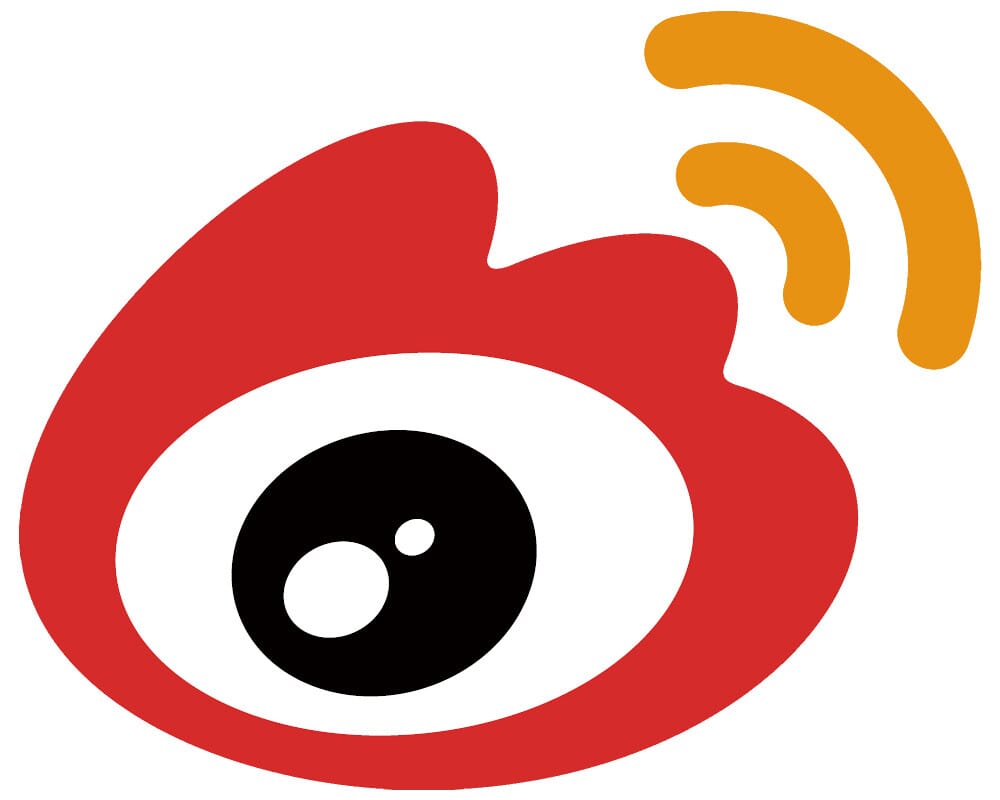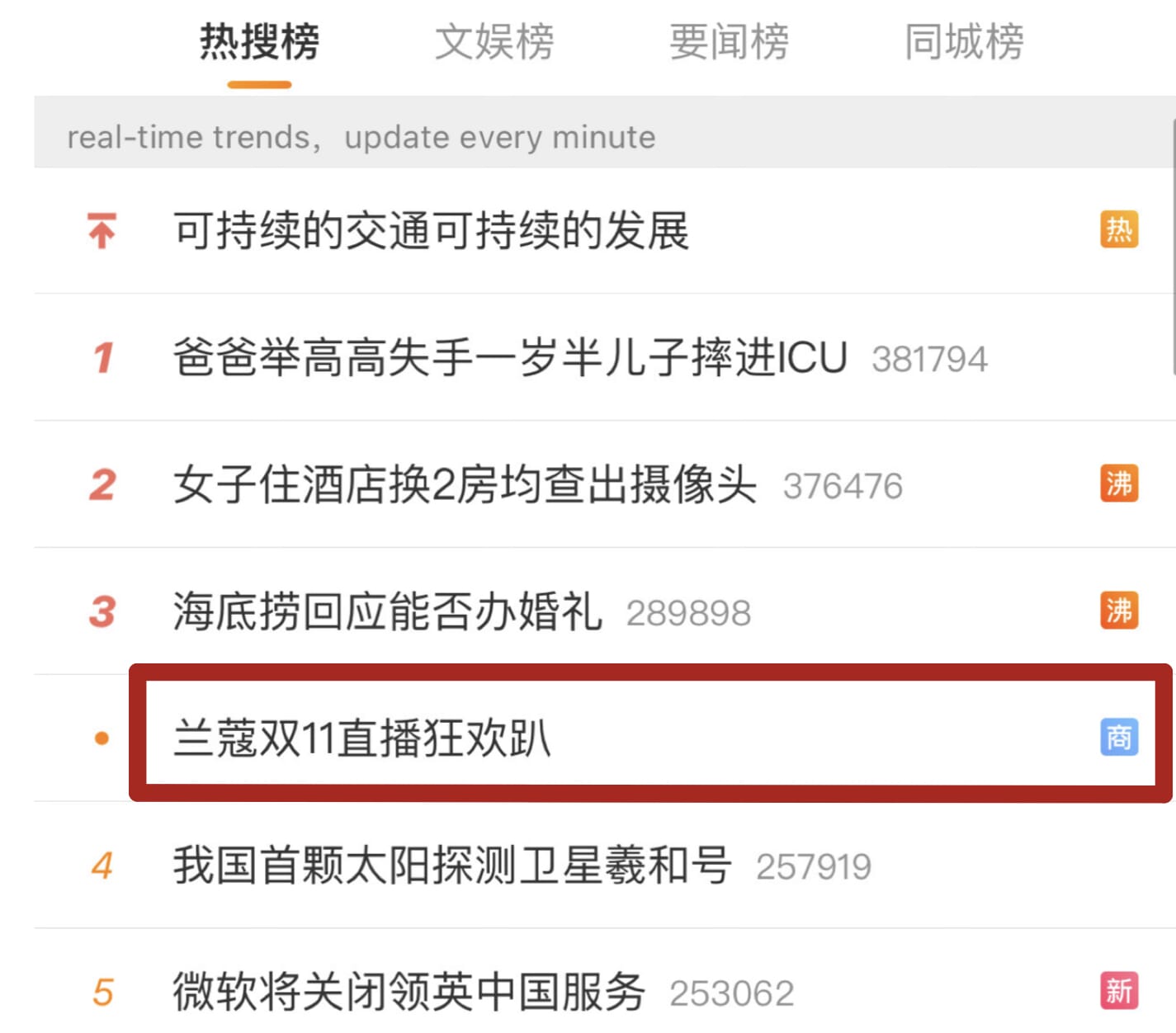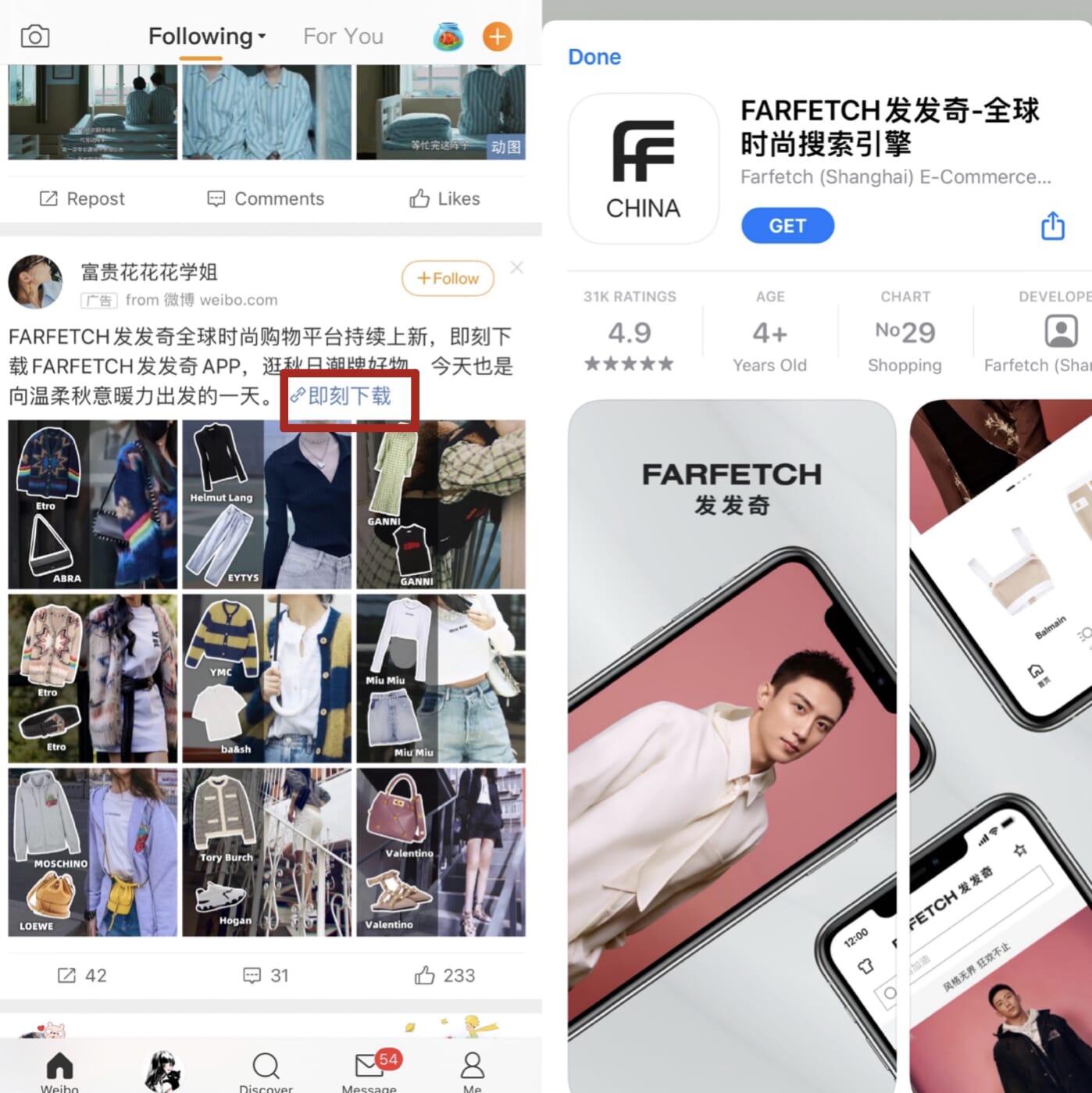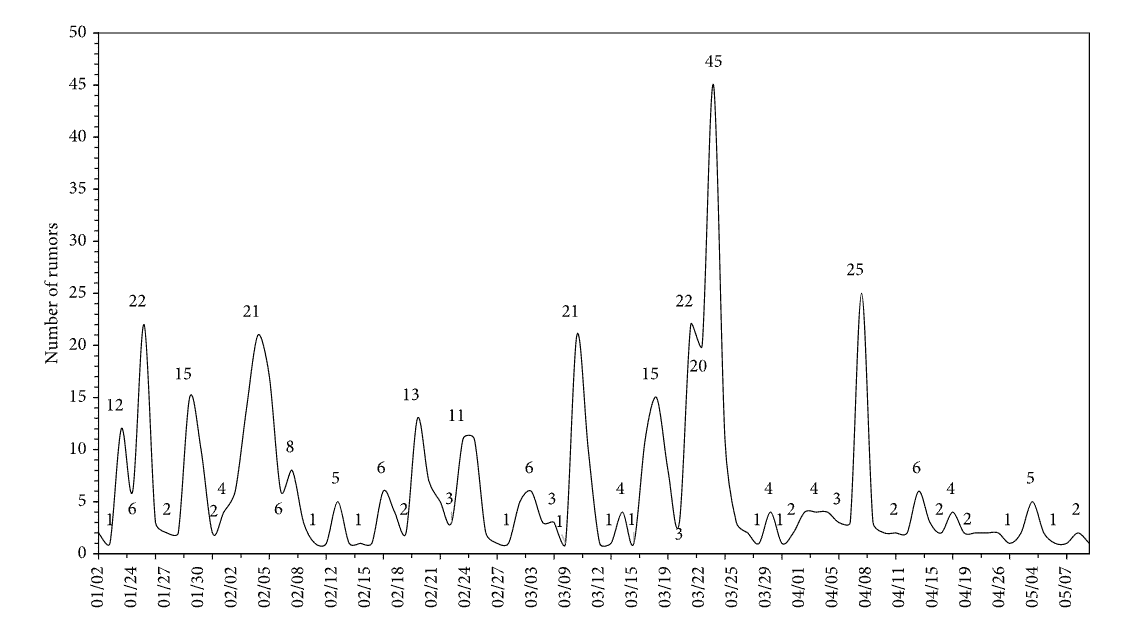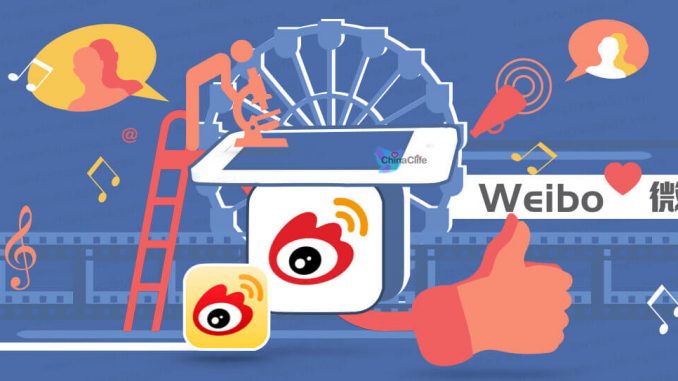
When people google Weibo website, what appears is its tagline: Weibo-Discover new things anytime and anywhere. As the largest microblog network among Chinese users in China and overseas, Weibo is a social platform with interactivity, immediacy and autonomy (Alarice, n.d.). This essay will introduce the basic functions of Weibo and how Weibo makes money. Through several examples, it demonstrates why Weibo can achieve great success in China and finally will discuss its problem and concern about the market.
PART1:What is Weibo?
Figure1. “Weibo.com Logo” by bfishadow is licensed under CC BY 2.0
Weibo is a microblogging social networking service launched in 2009 by Chinese technology company Sina Corp. Weibo is a platform for information sharing, dissemination and acquisition based on user relationships. In December 2006, there were 313 million monthly active users on Weibo, roughly the same as Twitter. The average daily active users were 139 million, of which 90% were connected through mobile devices. The online version of Weibo is one of the most visited websites in China, according to Alexa ranking in March 2017, domestic ranked 9th, and the world at 24 (Zhang, 2018).
The feature and functions
1) Weibo Home
Users can post content through the “+” in the upper right corner of the home page. The main page can view the latest content of the accounts concerned, of course, it can also group the accounts concerned to watch selectively. Weibo will also push content according to your preferences.
2) Account
Figure 2. “ScreenHunter_01 Feb. 09 09.04” by Charles Mok is licensed under CC BY-NC-SA 2.0
Weibo users need to submit identity information to create a normal account. According to specific criteria, qualified users can also apply for upgrading to an authentication account. The user name of the authentication account will be followed by a symbol “V”. The “V” is yellow and gold for individual accounts and blue for corporate and organizational accounts. (Zhang, 2018).
3) Messenger
Messenger allows followers to communicate directly with the person they follow in a private setting. This function is very popular with fans because it gives them a chance to express their love to their idols.
4) Discover
Figure 3. Screenshot on Weibo app
Weibo has a discover button at the bottom of the screen as shown in the figure below. Click this button and you’ll see unlimited trending content. You can search the entire tweet using the search bar at the top. Clicking on an item in this section will take you to the # Topic # home page. There are also some hidden functions like movies, games, music, etc. on Weibo.
5) Video
Weibo have a separate video at the bottom of the classification, with another Instagram-style feature for watching the latest videos from the accounts you follow and it also includes the function of live stream.
PART2:How does Weibo make money?
Advertising
1) Display advertisement
Figure 4. Screenshot on Weibo app
As shown in the image, an ad pops up when you open Weibo. Users can be directed to a dedicated page by using a button such as “click here”. Companies pay Weibo to display ads.
2) Search engine advertisement
Figure 5. Screenshot on Weibo app
Enterprises can also buy “hot topics” and a “hot search” list of search topics will buy the topic will be listed in the top list, after the search topic, users will be directed to the specified page, may be brand account, fan page, etc.
3) News feed advertisement
Figure 6. Screenshot on Weibo app
Businesses can customize the content of promoted posts by adding text, images, and videos around specific themes. Luxury platforms Farfetch, for example, have launched Weibo ads to promote their apps. It inserts a ‘download ready’ button below featured images that users tap to jump to the download screen.
4) Blog promotion
The blog promotion function can help you push your blog to a large number of Weibo users without limiting your fan base. The price of this feature is clearly marked, 20RMB can increase the reading volume by 1000+.
Weibo VIP membership
Weibo launched a paid VIP membership program in 2012, with 7 stages of VIP membership, from VIP 1 to VIP 7, where members need to earn “growth value” to “upgrade” their VIP. Regular monthly membership is 10rmb and regular annual membership is 108rmb (Wan, 2018).
Live stream percentage
Viewers can buy virtual gifts and “tip streamer” to the anchor by giving them during the live broadcast. The anchor can receive one-third of the gift commission, and the rest goes to the platform.
Weibo earns far more from advertising than other revenue sources, and Chinese e-commerce giant Alibaba’s 31.5 percent stake in Sina has attracted a growing number of companies to advertise on Sina Weibo, which takes a cut of its sales directly to Alibaba’s online marketplace (Liao, 2017).
PART3:The reasons for Weibo’s great success in China
Make everyone’s voice be heard
Weibo is a public voice platform, regardless of whether users have followers or not, the voices they send can be seen by more people based on topics, discovery, retweeting, searching and other functions.
Weibo became the central platform for people in the epidemic zone to document their days of fighting the epidemic, and when the epidemic first broke out, Fang Fang, a famous Chinese novelist, began writing a public diary on Sina Weibo. From January 25 to March 26, Fang published 60 posts revealing the truth about the events in her city and millions of netizens have seen every one of her articles (Benninger, 2020).
Making information quickly available to Internet users
Weibo is an instant social media platform which is clearly shown in this year’s flood situation in Henan, China. Chinese people are using Weibo to help speed up rescue efforts after deadly floods swept through Henan province. After many people pleaded for help online, thousands of people on Weibo sent their Weibo posts to emergency rescue teams so they would know the latest flood situation. During the disaster, people helped organize the information so that it was up-to-date and clear through Weibo (BBC News, 2021).
Bottom-up: Citizen Participation for Just Results
At present, Weibo is the most important platform for monitoring news and public opinion in China. It plays an irreplaceable role in promoting social justice, pursuing the truth and influencing social justice.
In the past, there have been several incidents of forced evictions in China. In Yihuang, a homeowner objected to the demolition, but the cost was 3 people burned and 1 person died. The reporter started reporting on the owner’s situation on Weibo, which drew the attention of netizens across China. This incident received growing internet attention and social pressure, and eventually, local officials were held accountable (Zhang & Negro, 2013).
Interaction among users is strong
Not only ordinary users, but also stars, celebrities and socialites use Weibo, where people can comment on what they say and think, and maybe even get a reply from them, bringing celebrities and ordinary users closer together.
PART4:Concerns
Fake News
Figure 7. Distributions of posts in false information publicity results on weibo (Wu et al., 2020)
With the rapid growth of online social media, a large amount of fake news is being generated and spread at a rapid pace. According to statistics as shown in figure 7, from January 2 to May 8, 2020, a total of 526 rumors about COVID-19 topics were posted by 505 accounts on Weibo. In terms of disinformation, the credit rating provided by Sina is unreliable for detecting rumor spreaders, and accounts that have previously written fake news remain popular for daily postings. Weibo should have stricter regulations of fake news and the publishers who spread it (Wu et al., 2020).
Market Monopoly
In August 2009, after Sina launched Sina Weibo, Wangyi Weibo was launched in 2010. However, Wangyi Weibo disappeared in 2014. Tencent Weibo and Sohu Weibo also launched in 2010, and in 2014 Tencent announced that it would stop investing in the development of Tencent Weibo. Sohu Weibo never gained significant market share either (Leung, 2018). Similar to TikTok’s’ monopoly on short video traffic, Sina Weibo already has a market monopoly in micro-blog. This phenomenon will certainly affect the market enthusiasm, once Weibo breakdown, where should users go.
Final notes
The core of Weibo is to “make everyone become we-media”. Intellectuals can share their opinions, artists and celebrities can promote their works to fans, and ordinary people can at least make jokes and share their lives on the topic. Weibo brings great convenience and chance to people’s life. Although Weibo still has a lot to be improved, it is currently one of the most popular social media in China and has achieved great success in its own field.
Reference List
Alarice. (n.d.). Weibo Marketing Guide. In Alarice. Retrieved October 13, 2021, from https://alarice.com.hk/weibo-guide/
Benninger, M. (2020, September 22). For the Record: How Wuhan Diary Charts the Start of the Pandemic. Blinkist Magazine. https://www.blinkist.com/magazine/posts/wuhan-diary-pandemic
China floods: People unite on social media to help flood victims. (2021, July 22). BBC News. https://www.bbc.com/news/world-asia-china-57924535
Liao, L. (2017, December 6). Weibo helped online influencers earn RMB 20 billion this year. Technode. https://technode.com/2017/12/06/weibo-20-billion-big-v/
Wan, V. (2018, April 9). The Ultimate Guide to Sina Weibo: The Largest Micro-Blogging Platform in China. Dragon Social. https://www.dragonsocial.net/blog/chinese-social-media-weibo-and-twitter-comparison/
Wu, W., Deng, M., Wen, X., Wang, M., & Xiong, X. (2020). Statistical Analysis of Dispelling Rumors on Sina Weibo. Special issue of Collective Behavior Analysis and Graph Mining in Social Networks. Vol 2020. https://www.hindawi.com/journals/complexity/2020/3176593/
Zhang, X. (2018). Weibo. In B. Warf (Ed.), The SAGE Encyclopedia of the Internet. SAGE Publications, Inc.
Zhang, Z. & Negro, G. (2013), ‘Weibo in China: Understanding its Development Through Communication Analysis and Cultural Studies’, Communication, Politics & Culture, vol. 46, pp. 199–216.

This work is licensed under a Creative Commons Attribution 4.0 International License.
